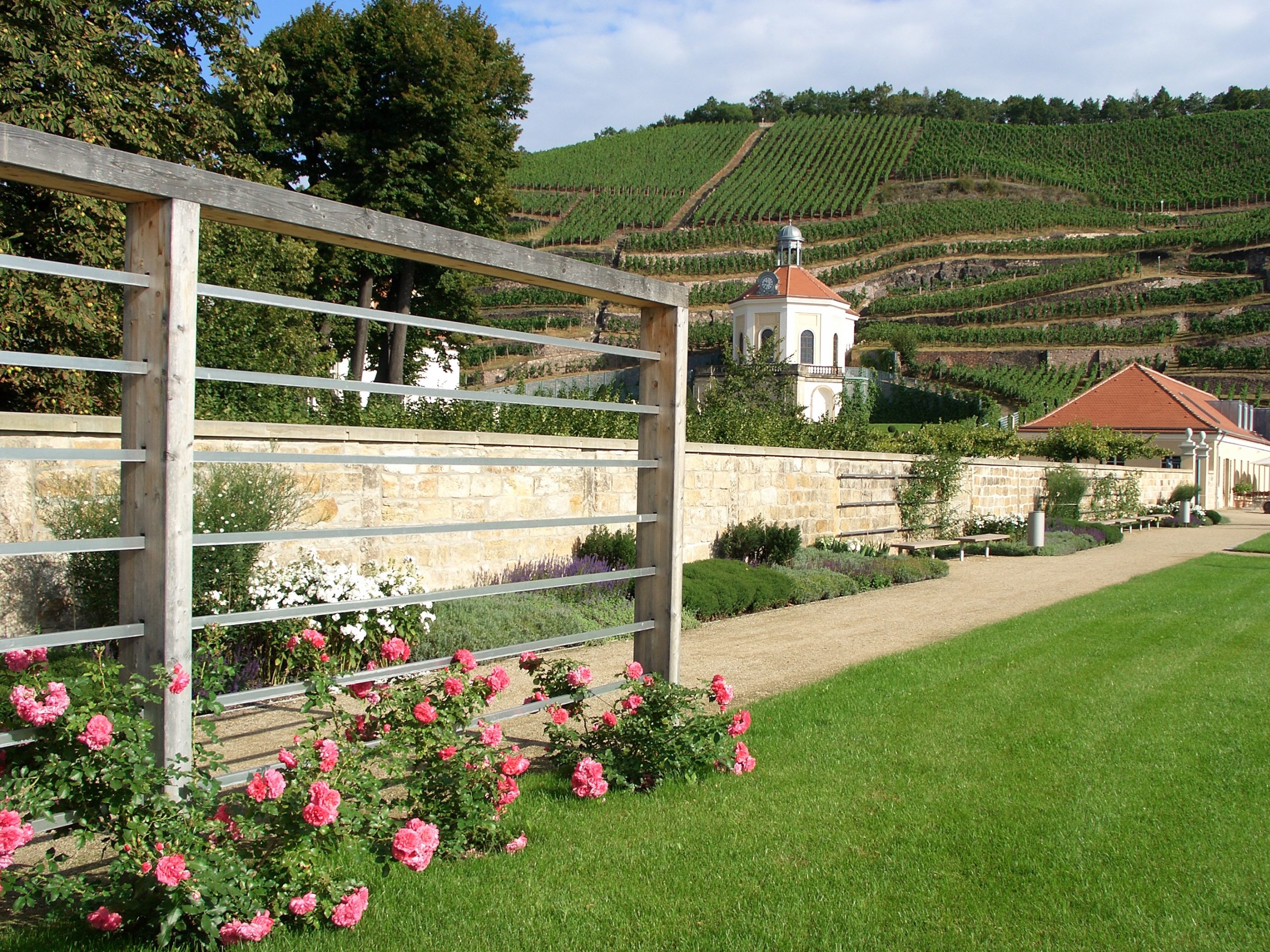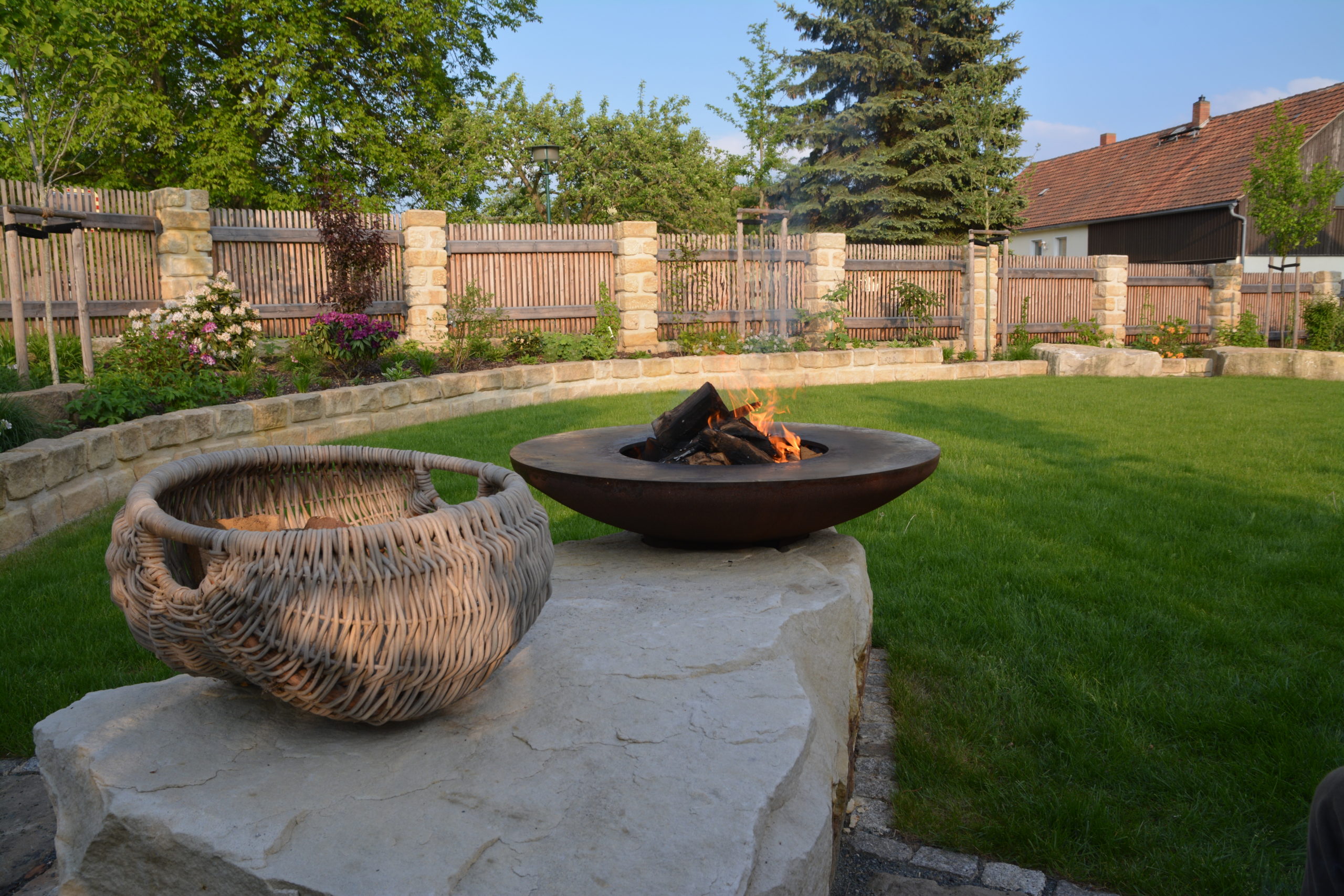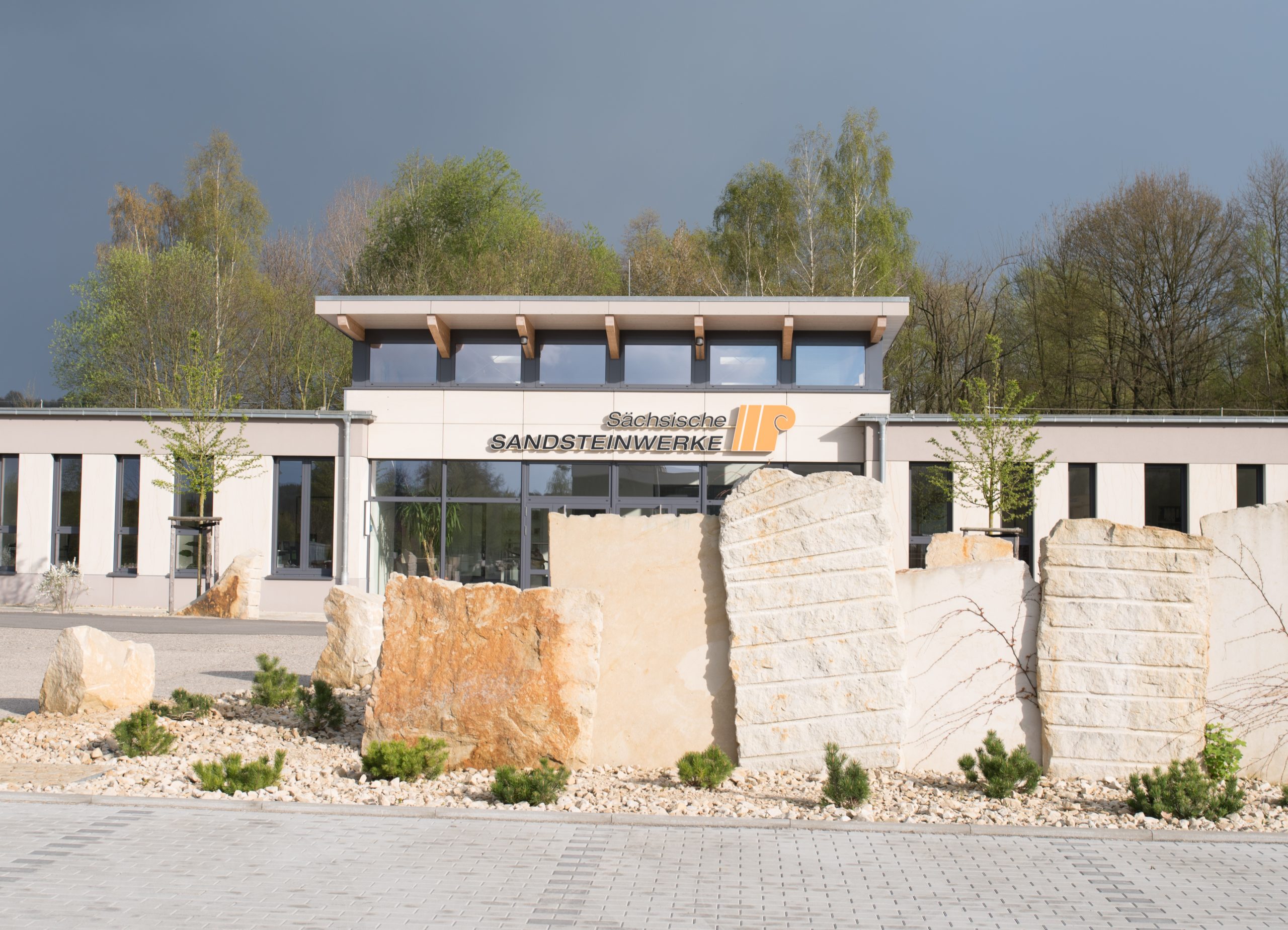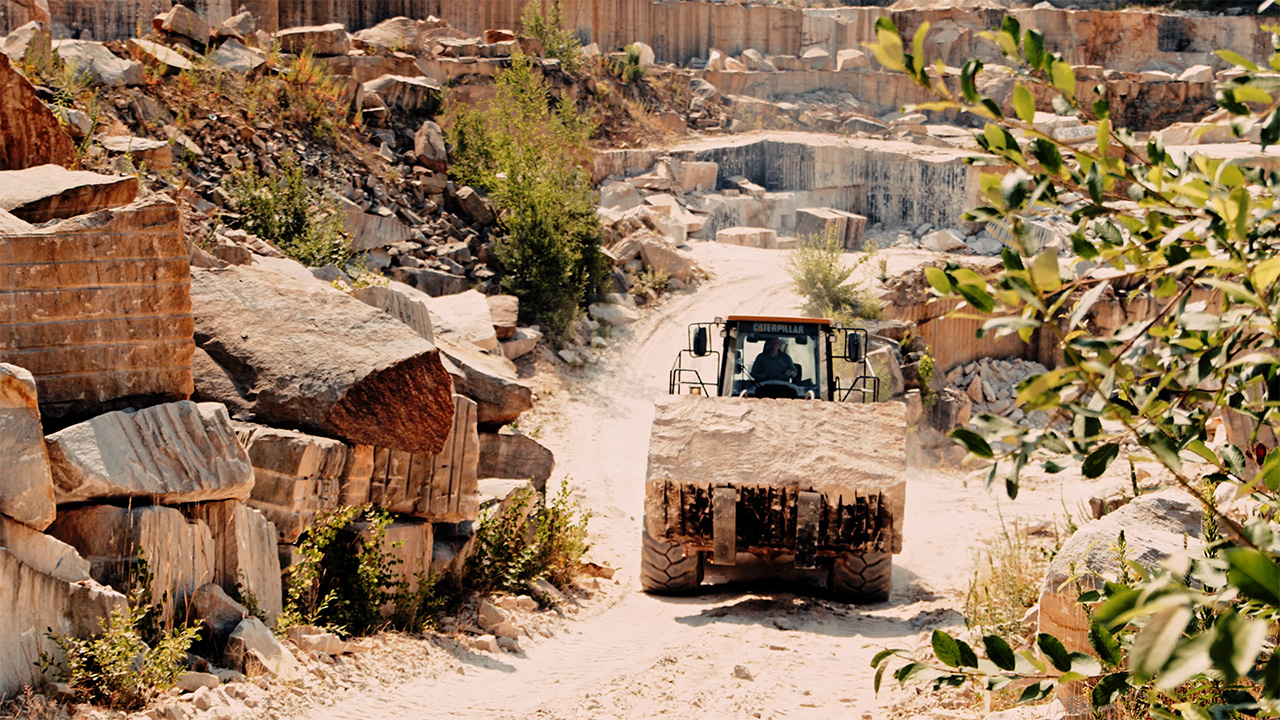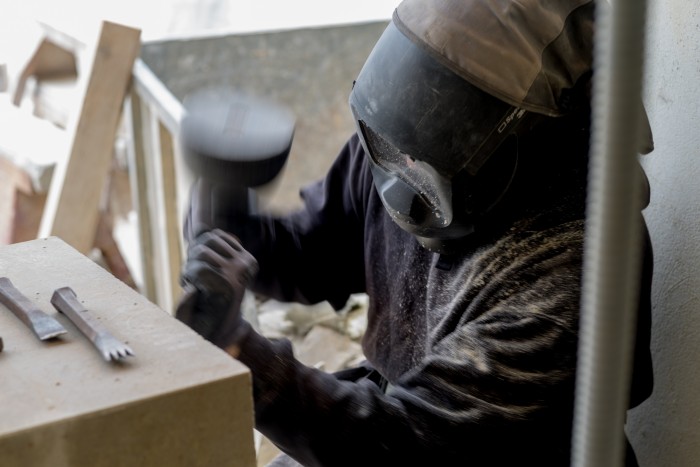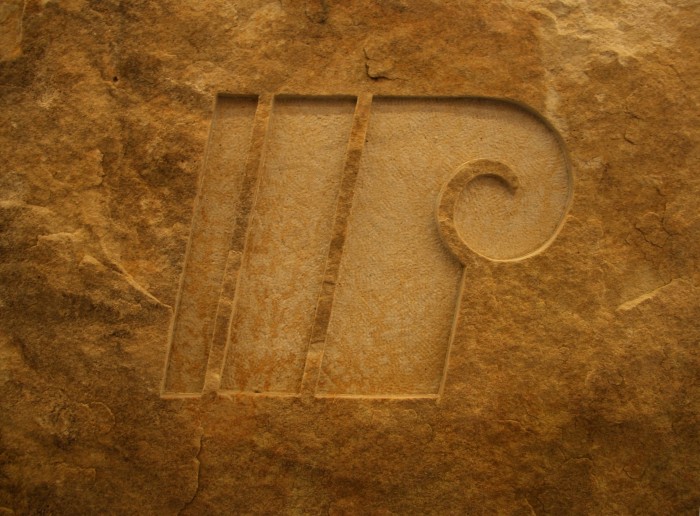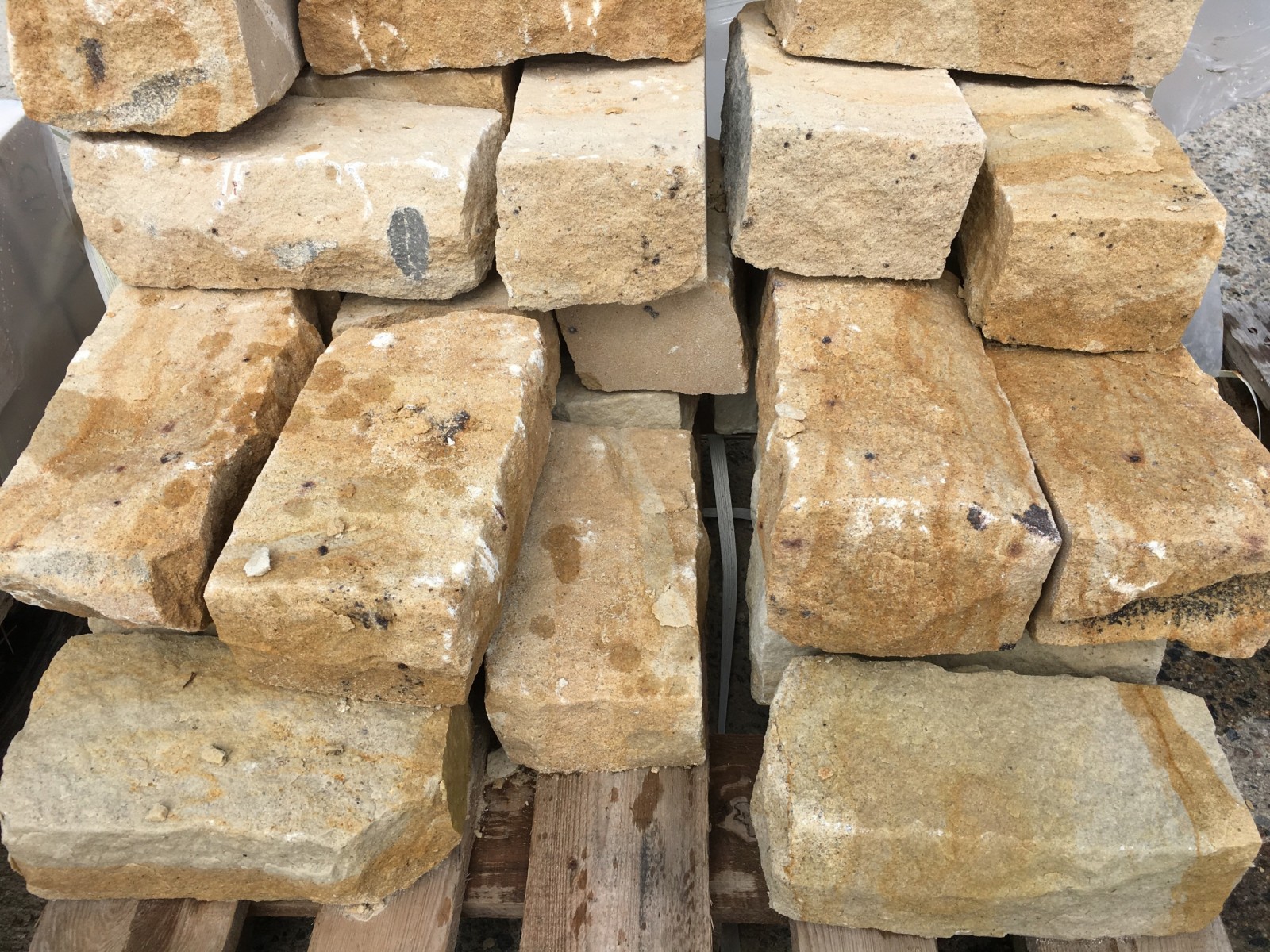Not all sandstone is the same
It consists half of sand grains and is the generic term for manifold types with specific properties, such as texture, color and weather resistance. The size spectrum of the sand grains ranges from 0.063 mm to 2 mm, rarely up to 4 mm. There are large deposits worldwide and also in Germany sandstone is a highly valued construction material for buildings, facades, paving, sculptures, as well as landscape and garden design. Depending on the region, there are individual types of sandstone that inspire architects, builders, home and garden owners to new, creative ideas. In the following list you will get an overview of the different types and properties of our sandstones:
Cotta sandstone:
- Texture: very fine-grained, pebble-bonded
- Colors: gray, white, yellow
- Main application: Facade, including column and pier cladding, window and door frames, ashlar and column stones including coping slabs, interior architectural elements, profiled stonework in restoration and new construction.
More about Cotta Sandstone "
Rheinhardtsdorf sandstone:
- Texture: Fine-grained, silica bound
- Colors: gray, white, yellow
- Main application: Main ly used outdoors, but can also be used attractively indoors. It is particularly suitable for solid and profiled stonework of any kind in restoration and new construction.
More about Rheinhardtsdorfer Sandstein "
Posta sandstone:
- Texture: medium to coarse-grained, pebble bonded
- Colors: yellow-brown, also gray color with typical dark brown iron hydroxide concretions or light gray cavernous inclusions
- Main application: Used in particular for architectural parts subject to high loads and splash water hazards, as well as in landscaping. It is particularly suitable for step and floor coverings in outdoor areas, in base masonry, as bank and embankment stone as well as hydraulic engineering, masonry or paving stone.
More about Posta sandstone "
It is still important to say here that the classification according to sandstone types is always related to the sand contained. The name reference is due to the region of occurrence. Popular sandstone colors depend on the specific admixtures and have no direct relevance to the species affiliation. Our Elbe sandstone ranges in color from a light gray to warm yellow/brown/ochre tones.
Sandstone care
The warm and lively appearance makes the sandstone so attractive and popular with our customers. The light shades and gently textured surfaces create a wonderful feel-good atmosphere for indoors and outdoors. But what if you spill a glass of red wine on the weekend or your Sunday morning coffee on the terrace, or your dog runs across the natural stone slabs with wet paws? Don't worry - the cleaning is quite uncomplicated. So if you have now decided on the type of sandstone for your individual project, the next question is already in the room:
How do you actually care for sandstone properly?
Cleaning is quite uncomplicated. It hardly differs from the cleaning of other natural stone floors. Everyday dirt on stone surfaces can be removed indoors by vacuuming, regular sweeping with a soft broom and occasional steam vacuuming. Here it is only particularly important that you do not use acidic products when choosing a cleaner. Among other things, this can adversely affect the color of the sandstone or even damage the surface. In order not to stress the surfaces with chemical ingredients, we recommend using mild soap cleaners or preferably a care product optimized for natural stone.
In case of heavy soiling, a basic cleaner for stone care often provides relief. In case of real stains on the stone, a special dirt remover for natural stone is highly recommended. Outdoors, it is often sufficient to gently sweep the terrace with a broom or carefully hose down the sandstone slabs with clear water. Green deposits on the terrace can be countered with an outdoor stone cleaner.
Tip: Our sandstone can withstand cleaning with a high-pressure washer. Of course, you should always use this with caution and not too often if possible. Basically, if you use it frequently, the strong jet can damage the stone surface.
Winter tip: The use of road salt for sandstone outdoors in the frosty season is also no problem. Our POSTAER sandstone in particular is ideally suited for this purpose. However, we would be happy to advise you on this again in a personal conversation. A good and gentle alternative to road salt is sand or fine chippings.
So you are well equipped for sandstone care. Have fun with the implementation!
For all further questions and uncertainties, we are also available in a personal conversation!
